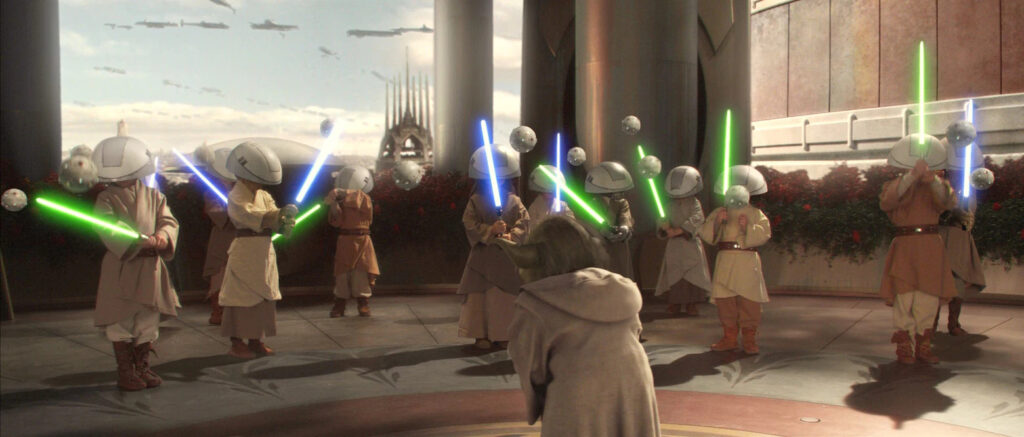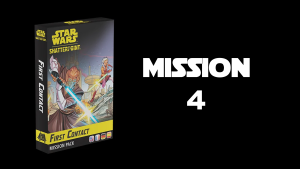This article will be focused on how to teach new players to play Legion.
A sentiment many players have experienced is the desire to bring more people into this game we love. This could either be from the outset, grabbing your first starter to split with a friend as fresh-faced beginners, or after you’ve been deep in the game for month, teaching that same fresh-faced newbie. Being a teacher can be a daunting task and it’s often underappreciated just how difficult it can be. There’s a lot of schools of thought on how to approach it and I’ve come down to three learning styles, with pros and cons. Hopefully you can find a style that works for you.
Drawing In The Uninterested
One question I see that frequently comes up is “How can I get my brother/girlfriend/dog into Legion?” when the person in question hasn’t shown any interest in the game at all. It’s a fair question, especially with a significant other. It’s one of your hobbies and it’s perfectly reasonable to want to get them in to enjoy your leisure activity with you.
Unfortunately, I am not here to answer that for you.
Wargames are a massive time investment. There is the cognitive investment in the form of learning what all these rules mean, what each unit does and how to move them. There is a monetary investment in buying models. There is a physical and time investment involved in buying, building and painting these models. Even if you can curb the monetary investment by buying models for them or the physical/time investment by painting their models it’s very rare that someone is going to find the energy to do all of these things just because you prodded them a lot. I’m sure there are examples, and if you’ve successfully roped someone in to playing by pushing the game on them a lot, I’d love to hear about how it went down in the comments below.
In general though, I’ve found the best way is to let your enthusiasm win out. If someone sees how much enjoyment you’re getting out of this game they may be more willing to approach you to ask how to play. This is a much more ideal situation because they’ve made the decision themselves to give it a try. Your enthusiasm wore off on someone and now you have someone else to join you!
Getting Started
So you have someone who has expressed interest. Perhaps they bought a starter set and are ready to use it, want to go in with you on one, or are a bit more tepid and want to play with some models without putting money down first. Regardless of the circumstances, most war gamers learned their first game from a veteran, or at least someone who has a few games under their belt. These games are complicated after all and if you’ve never played a wargame before they can be very difficult to comprehend. The base rules themselves are a daunting read in their own right and that’s before you look at how you combine them to create even the most basic of strategies.
You should be honored that they chose you as their teacher! You’re bringing someone into a hobby, and will be their first step into a larger world. They trusted you to educated them on how to join in this game with you, and now you must decide how you want to impart knowledge upon them.
I’ve come across three general teaching styles. In escalating order of intensity, these boil down to: The Demonstration, The Sandbag and The Deep End. These are not strict, dogmatic schools and work more as like a continuum of styles. You may have a mix of styles, creating a new hybrid version, or progress down the line as the player gets more confident with the game. Which teaching style you use is going to depend largely on what you as the teacher feel most comfortable with and the person you’re teaching’s ability to adapt to new ideas and concepts. None of these approaches are bad but the best learning is going to depend on what works for you both.
The Demonstration
The demonstration is the least taxing of the options. It involves very little in the way of preparation on the part of the student and puts more work on the teacher. Unlike the other two styles it’s not really like playing a game, more like a video game tutorial where the game tells you what to do, and then you do it. Achievement Unlocked.
As the teacher you give them a list, the cards and help them set up. You explain what’s happening every step of the way and tell the student what to do next. Then you do your thing, to show what an opponent’s turn might look like, then guide them through the process of their next activation. You might take the training wheels off a bit and ask if they know what to do next, letting them set things up. You may not actually finish the “game”, only going as long as it takes to teach the core concepts and not really care about winning.
There are advantages for this system. It’s great for people who are completely new to the concept of a wargame, and therefore may not have skills and concepts that they can carry over from another game to help them learn this one. It’s also very low stress. For people who feel a lot of pressure about “screwing up” this keeps the guard rails up and lets them learn at their own pace.
The downside to this approach is that for someone who is a bit more intense, this is a super boring way of going about learning a game. They’ll pick up the core concepts pretty fast and then be left without much else to do. If you know that might happen then it’ll be good to plan time for an actual game shortly after.
The good news is that the Core Sets make facilitating this very easy. Both of them come pre-packaged with a “Learning game” that sets up the board, armies and terrain for you. This allows the more veteran player to easily explain what is going on and what the next steps are. Most everyone buys a core set to get the necessary tools anyway so it’s only using things that people already have on hand, which makes the process more affordable.
The Sandbagging
“Sandbagging” is a term that means to deliberately underperform in order to set low expectations that you can then surpass. If people think you’re bad at the game, they’re even more surprised when you beat them! Though in this case, we’re not doing it for malefic purposes but for the sake of teaching.
With this approach, you’re taking the training wheels off compared to The Demonstration method. You may or may not offer list building advice, depending on how confident the student feels but you yourself will likely hamper your list on purpose. During the game you’ll let them make decisions themselves, maybe offering some insight on what would be an ideal move or combination of moves in the moment. At the same time you yourself will try and turn off that competitive brain of yours and make some blunders so that they can achieve victory.
The benefits of this method is that it helps people get off to a good start. People get that endorphin hit from winning and it associates good things with the game in their brain. It’s a lot easier to feel like you “get it” when you attempt to do something and succeed, even if that success was maybe achieved a bit too easily. It reduces the level of stress which allows them to think more clearly. Even if they know you’re going easy on them it becomes easier to internalize those lessons learned when it’s done in an environment where fear of losing isn’t distracting them from the rules.
The argument against it is that players don’t really learn how the game works on a more practical level. The rules as written in the manual and the actual game on the table do not always line up. You might read in the rules that you can move, shoot, aim, dodge or standby but that isn’t going to teach you a thing about how someone might shoot with one unit, activate a standby with another unit, then shoot at you with the first unit again thanks to Exemplar Standby sharing. Those lessons might come later, but if they don’t learn it from you who do they learn it from?
Be cognizant of what lessons need to be taught. You may be able to point out more advanced strategies if the player is picking up on the game fast, or you may do the opposite and eschew certain game mechanics now to focus on the fundamentals. There is no harm in telling someone “Don’t worry about that right now” if it might overcomplicate things. They’re still learning.
The Deep End
On the extreme we have The Deep End, as in a pool. This strategy works best with veteran wargamers, who may already be familiar with other games like Warhammer or Malifaux and only need to get caught up on the things that make Legion unique. In short, you don’t hold back or at least, you only hold back a little.
This is for learning, so you still will need to educate them but you can assume the student will do much of the prep work. They know how list building works in the abstract and they understand they need a 500 or 800 point list. They may not know yet what’s worth taking or what plays well together, but they can at least put together a list that functions and show up to the table. You’ll bring your own list and you’ll play a “real game” with minimal explanation needed outside of the occasional question. You may want to bring a softer list than you might actually, after all they’re a beginner and won’t know all the advanced strategies so it’s a great time to try out some units you otherwise never put on the table. In the end they will probably still lose, they are first-timers after all.
Why do that to someone? To be mean? Some might do it just to get a chance to stunt on a newbie but the chief argument is that by soft balling someone they don’t actually learn anything. If someone sees what an advanced player can do they will be more likely to pick up on high level skills faster than if that can gets kicked down the road to a later date. You don’t need to crush them but giving them a glimpse of what actual play looks like and not a sort of floaty “not actually trying” approach is a better tool.
Arguments against it is that it’s demoralizing. Someone might feel like they don’t “get it” if they cannot clear a simple teaching game and feel dejected from trying. This is especially true if they are new to this type of games and just do not understand a thing about what’s going on, let alone how to fix their mistakes. Even if you don’t intend to be cruel it might come off that way.
Conclusion
Which should you do? Well as I said near the top, that’s largely up to you and what works for your student. If you’re teaching a friend, you probably already know what works for them. If it’s some rando from your FLGS’s local discord, you might need to ask what they’re looking for. In general it’s better to go too soft than too hard on someone.
Personally, I confess I am fond of being thrown in the deep end when I am learning, because I feel that getting trounced is the easiest way to learn to never make a mistake again. The times I made mistakes that cost me a game are burned into my head so badly I make sure never to do that again and has made me a better player. However, I’m a much nicer teacher than I expect to be taught myself and will tend to softball games at people, playing very unoptimized lists while still playing a “real” game.
I really want to know about your teaching (and learning!) stories. What techniques do you use when teaching a new person, any really great stories about getting someone onboard with the game or total disasters where someone tried to teach you and nothing stuck. I want to hear it all! Sound off in the comments below!






3 Responses
Getting new players in the game critical to Legions longevity. I just started playing a few months ago and love this game in almost all of its aspects. Legion has a ton of potential to a mega popular due to star wars as a whole being more mainstream then ever in my opinion. I think the biggest thing holding Legion back is the lack of advertisement. I walked into a comic book store and stumbled upon this gem of a game. I was a Heroclix player for about 15 years for the mere strategy part of the game and gave it up for legion.
When I decided to take the plunge into Legion and get my first core set, I found YouTube videos of rules explainers and battle reports extremely helpful. If your padawan is interested in learning more after a beginner game, watching those types of videos are awesome. I also participated in an eight week escalation league at my FLGS as a beginner which helped me a ton too.
I taught a friend of mine to play about a month back, and I have to say I’d wish I’d read this article first – I definitely made some missteps!
He’s an old X-Wing buddy, and a really good one at that. I’d say he beats me six or 7 times out of ten. So while I wouldn’t say I came into our game with a competitive mindset, I think I really underestimated just how MUCH there is the learn in legion.
It was a small moment, but early in the game he was still working through cohesion and line of sight, and left some Mandos out of cover and in view of Cassian.
Sniper config plus pierce plus aims = dead red saves.
It didn’t swing the game, but it did remind me it’s not always fun to lose units early to mechanics you don’t totally grasp. It reminded me to walk him through the main threats in both our lists – what major things to look out from each unit, so he felt equipped to respond.